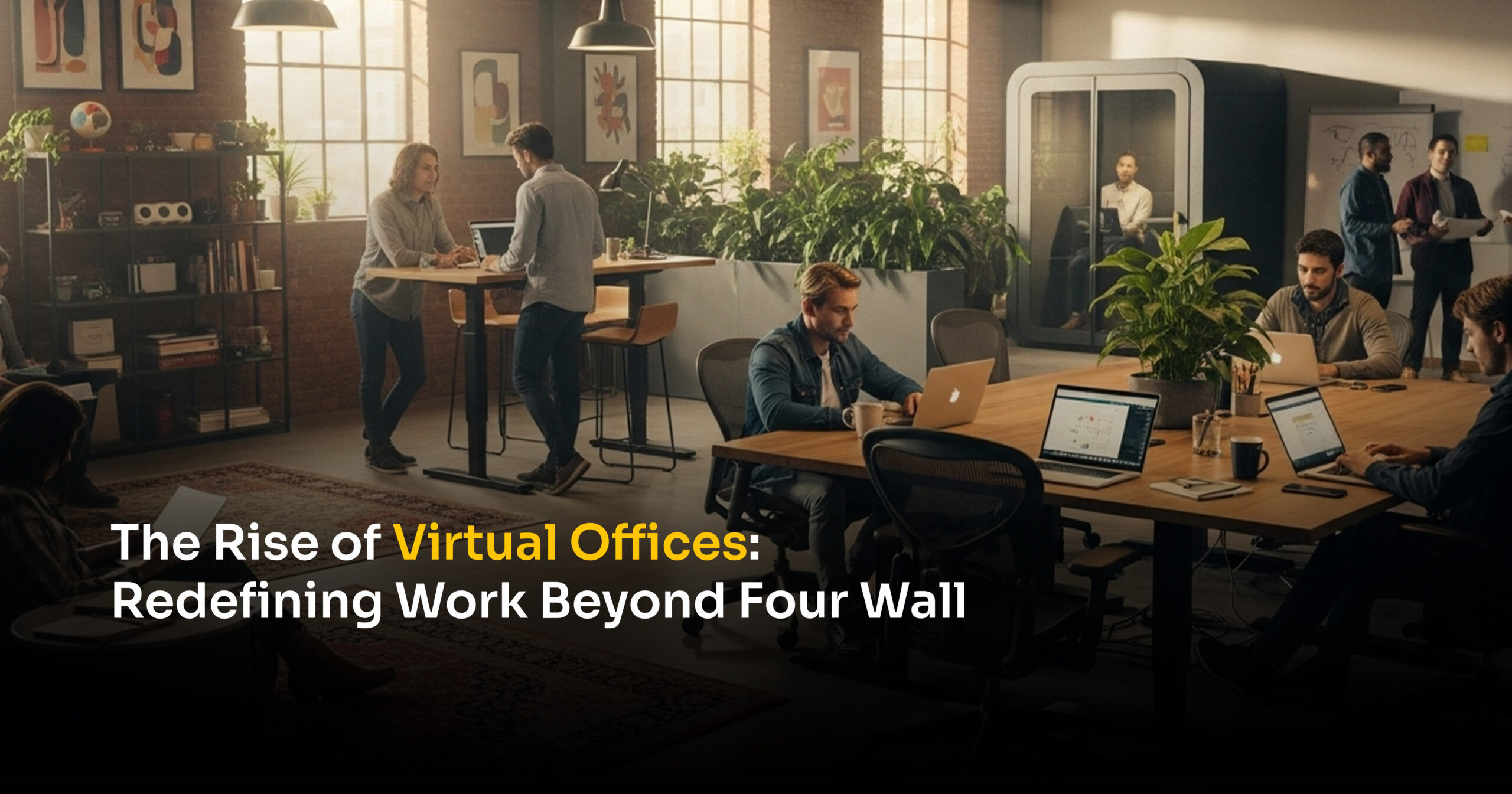In today’s competitive marketplace, small businesses and startups in Chennai are constantly looking for ways to optimize costs, enhance productivity, and scale quickly. Traditional office leases often burden small enterprises with long-term commitments, heavy security deposits, and hidden maintenance costs. Enter shared office spaces in Chennai—a flexible, cost-efficient, and growth-oriented solution that’s transforming the way small businesses operate.
Shared office spaces provide fully equipped, plug-and-play work environments that cater to the evolving needs of modern entrepreneurs, freelancers, and SMEs. In this in-depth guide, we’ll explore how shared office space in Chennai can boost small business growth, its benefits, key features, and tips for choosing the right space.
Why Shared Office Space Matters for Small Businesses in Chennai
Chennai is one of India’s fastest-growing business hubs, with a thriving ecosystem of IT firms, manufacturing industries, startups, and professional services. This vibrant landscape presents opportunities but also challenges—especially for small businesses with limited budgets.
Shared office spaces offer a game-changing solution by providing:
- Professional infrastructure without upfront investments
- Flexible terms to scale up or down
- Networking opportunities with like-minded professional
- Prestigious business addresses at affordable costs
What is Shared Office Space?
Shared office space, also known as coworking or flexible workspace, is a facility where multiple companies, professionals, or individuals share a fully equipped office environment. Instead of leasing an entire office, businesses rent only the space they need—be it a single desk, a private cabin, or a meeting room.
In Chennai, shared office spaces are spread across key locations like Guindy, Nungambakkam, OMR, T Nagar, and Anna Salai, offering convenient and accessible workplaces to professionals across industries.
Key Benefits of Shared Office Space for Small Businesses
1. Cost Savings and Reduced Overheads
Renting a traditional office requires paying for furniture, utilities, cleaning staff, internet, and maintenance. Shared office spaces roll all these into one transparent monthly fee. This allows small businesses to redirect funds to core activities like marketing, talent acquisition, and product development.
2. Flexibility and Scalability
Business needs can change rapidly. Shared spaces let you rent by the day, month, or even hour, allowing you to scale your team up or down without incurring penalties or moving hassles.
3. Prestigious Business Addresses
A prime location enhances your credibility with clients. Shared offices in central business districts—like Nungambakkam or Guindy—help small businesses build a professional image without paying premium rents.
4. Networking and Collaboration Opportunities
Shared spaces naturally foster interaction between different professionals and organizations. This can lead to collaborations, partnerships, and new client leads—something that’s harder to achieve in isolated offices.
5. Fully Equipped Meeting and Conference Rooms
Impressing clients during presentations or interviews becomes easier with access to modern, well-equipped meeting rooms, eliminating the need to rent separate venues.
6. Professional Support Services
Receptionists, IT support, pantry facilities, and housekeeping staff handle non-core tasks, letting you focus entirely on growing your business.
Shared Office Space Vs. Traditional Office Space
| Feature | Shared Office Space | Traditional Office Space |
|---|---|---|
| Upfront Costs | Minimal – pay-as-you-go | High – security deposits, interior setup |
| Flexibility | High – rent per desk or per hour/month | Low – long-term leases |
| Maintenance | Included in rent | Self-managed |
| Networking | High – collaborative environment | Limited – isolated environment |
| Scalability | Easy – add or reduce seats anytime | Difficult – requires new space |
| Professional Image | Access to premium addresses | Depends on location |
Verdict: For small businesses, shared office spaces offer unmatched flexibility, cost-effectiveness, and growth opportunities.
Prime Locations for Shared Office Spaces in Chennai
Chennai’s business landscape is spread across several hubs. Knowing where to set up shop can directly impact your business growth.
● Guindy
A prime industrial and IT hub, Guindy offers excellent metro connectivity and proximity to the airport, making it ideal for businesses with frequent travel requirements.
● OMR (Old Mahabalipuram Road)
Known as the IT corridor, OMR hosts tech companies, startups, and coworking spaces—perfect for small businesses in the technology sector.
● Nungambakkam
An upscale area with a mix of corporate offices, retail, and hospitality. Great for businesses targeting premium clientele.
● Anna Salai
This central arterial road offers unmatched visibility and connectivity, making it a hotspot for professionals and service-based businesses.
● T Nagar
Well-known for commerce and retail, T Nagar also houses several shared workspaces ideal for small consultancies and creative firms.
Types of Shared Office Spaces in Chennai
Small businesses can choose from various setups depending on their needs:
- Dedicated Desks: A permanent workspace in a shared environment.
- Hot Desks: Flexible seating on a first-come-first-serve basis.
- Private Cabins: Closed office areas for teams or founders needing privacy.
- Meeting Rooms: Pay-per-use rooms for client meetings, training sessions, or workshops.
- Virtual Offices: Premium business address with mail-handling and reception services.
How Shared Office Spaces Boost Small Business Growth
1. Enhances Professional Image
Clients and investors are more likely to trust businesses that operate from well-maintained, prestigious office spaces. Shared offices allow small businesses to project a big-business image at a fraction of the cost.
2. Improves Team Productivity
Modern interiors, ergonomic furniture, and high-speed internet create a conducive work environment that motivates employees and increases productivity.
3. Facilitates Talent Attraction and Retention
Millennials and Gen Z professionals prefer dynamic, collaborative workspaces. Shared office spaces help attract top talent by offering vibrant and flexible environments.
4. Enables Faster Market Entry
Businesses expanding into Chennai can establish operations within days instead of weeks, thanks to ready-to-use shared spaces.
5. Supports Business Continuity
With backup power, reliable internet, and IT support, shared spaces minimize downtime and keep operations running smoothly.
6. Encourages Innovation Through Collaboration
The diverse mix of professionals in a shared space fosters cross-pollination of ideas and knowledge-sharing, sparking innovation.
Key Amenities Offered by Top Shared Office Spaces in Chennai
- High-Speed Internet & Wi-Fi
- 24/7 Power Backup
- Reception & Administrative Support
- Mail and Courier Handling
- Housekeeping and Maintenance
- Pantry and Refreshments
- Parking Facilities
- Security and Access Control
- Event and Networking Zones
Tips to Choose the Right Shared Office Space in Chennai
✅ Identify Your Business Needs
Determine the number of desks, meeting room frequency, and privacy requirements before starting your search.
✅ Consider the Location
Choose a location that is accessible for both your team and clients. Proximity to public transport and business districts can make a difference.
✅ Evaluate Facilities
Inspect the workspace for amenities such as internet speed, power backup, pantry facilities, and IT support.
✅ Check Community and Networking Opportunities
Look for spaces that host events or provide opportunities to connect with other professionals.
✅ Review Terms and Flexibility
Ensure that the lease terms match your business model. Ask about scalability and hidden charges.
✅ Visit Before Finalizing
A physical visit helps you assess noise levels, cleanliness, and ambiance before committing.
Examples of Top Shared Office Spaces in Chennai
1. The Executive Zone
Internationally recognized coworking space with multiple locations including Anna Salai, Mount Road,.
2. Smartworks
Enterprise-grade shared workspace offering customizable solutions and vibrant office setups.
3. Doxa Business Centre
Boutique-style shared space offering premium services in Nungambakkam.
4. The Executive Zone
Ideal for small businesses seeking luxury and professionalism in Anna Salai.
5. IndiQube
Flexible workspaces tailored to startups and SMEs with a focus on scalability.
(Tip: In your internal blog, you can hyperlink to your own services or landing pages here.)
Case Study: A Small Business Scaling Up with Shared Office Space
Background:
A Chennai-based digital marketing agency started with two employees and struggled with high rental costs for a traditional office.
Solution:
They moved to a shared office space in Nungambakkam, taking a dedicated desk plan initially, then scaling up to a private cabin as the team grew.
Results:
- Reduced operational costs by 40%
- Improved client perception due to premium address
- Accessed networking events and bagged two major clients through coworking connections
This example highlights how shared office spaces can directly influence small business growth.
Future of Shared Office Spaces in Chennai
The future of work is hybrid, and shared office spaces are at the center of this transformation. According to industry reports, flexible workspace demand in India is projected to grow by over 40% in the next three years, with Chennai being one of the key drivers.
Emerging trends include:
- More Niche Spaces: Industry-specific coworking areas for lawyers, creatives, or tech professionals.
- Wellness-Focused Workplaces: Onsite gyms, meditation zones, and ergonomic setups.
- Green and Sustainable Spaces: Energy-efficient infrastructure and eco-friendly interiors.
- Tech-Enabled Workplaces: Smart access, app-based bookings, and virtual collaboration tools.
For small businesses, this means even greater opportunities to find a space perfectly suited to their needs.
Internal Linking Opportunities (Topical Cluster Strategy)
Since this is an internal blog post, you can create topic clusters to interlink with related pages or services on your website. Examples:
- Link to “Top-Rated Business Center in Chennai for Professionals” (another blog post)
- Link to your Shared Office Space Services Page
- Link to “Virtual Office in Chennai” page
- Link to “Meeting Room Rentals in Chennai” page
This approach improves SEO, keeps visitors on your site longer, and establishes your authority on workspace-related topics.
Final Thoughts
Shared office spaces are no longer just a trend—they are a catalyst for small business growth. In Chennai, where opportunities abound but costs can be high, shared workspaces provide the perfect blend of affordability, flexibility, and professionalism.
By choosing the right shared office space, small businesses can:
- Enhance their brand image
- Improve employee satisfaction
- Access prime locations
- Network with potential clients and partners
- Scale up seamlessly without financial strain
For entrepreneurs and small business owners, now is the time to embrace this innovative workspace model and unlock your growth potential.
Looking for premium shared office space in Chennai to grow your small business?🚀 Book a free consultation today to explore our flexible plans and discover how we can help your business thrive.









